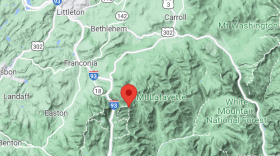In a meeting Wednesday, the New Hampshire Fish and Game Commission began a discussion on whether to open a bobcat trapping season. The proposal is far from final, but it’s already attracting the ire of the animal rights community.
Late last year biologists at the University of New Hampshire announced the results of a study, commissioned by Fish and Game. They estimated that from 1989 to today, the bobcat population in New Hampshire had rebounded from less than 200 cats to somewhere between 800 and 1,400.
Kent Gustafson, with the Wildlife Division of Fish and Game, laid out the results of that study and the work of staff biologists to Fish and Game’s commissioners. He says that based on natural mortality, and estimated birth rates “that would give us a rate of population increase of about a little over 5 percent per year, resulting in about 77 animals being added to the population on an annual basis.”
“That 77 we really believe represents a harvestable surplus,” he concludes.
A harvestable surplus is Fish and Game biologist speak for bobcats that can be trapped.
“There’s no need to kill the bobcat, they’re not causing any problems, we don’t even really see them on the landscape,” says Suzanne Fournier, with Speaking For Animals. She and a handful of animal rights activists turned up with signs to protest the idea of a bobcat season.
She argues that bobcats have really only just begun to rebound to the point where people are beginning to see them now and then.
“Those people who see them, are the lucky ones, they might see one at their bird feeder. Just one cat outdoors, at a bird feeder,” she says.
Bobcats a slightly bigger than a housecat. In the past decade they’ve been seen all over the state. They eat mostly rabbits, but also any small rodent or bird that they manage to catch.
Some biologists argue that unlike prey-species, predator populations self-regulate with the abundance of their prey, and Helen Tam-Semmens, who also came to oppose a bobcat trapping season, says predators are the mechanism by which natural selection works.
Thus having them around makes prey populations healthier too.
“Especially in New Hampshire, we have basically coyotes and bobcats, they are the apex predator. So if we want a healthy eco-system, we need to preserve the bobcats,” says Tam-Semmens.
Fish and Game argues its data show New Hampshire, at this point, has about as many bobcats per square mile as both Vermont and Maine. Trapping or hunting the animals is legal in both of those states.
As for the folks who would do that trapping, they argue they would only take a small portion of the total population. Fish and Game was mentioned a season of 70 or 75 animals harvested.
“It’s something we want as long as the population can handle it,” says Daniel Teague with the New Hampshire Trappers association, “We have a love of wild places and wild things, our goal is not to eradicate species.”
He says being out on his trap-lines is just a great way to spend a day.
“It’s in my blood, it’s in my soul. It’s just something you can’t describe,” he says, “And there’s probably no more green warm-clothing material out there than wild fur. There’s nothing more organic… and the Russians know what’s warm, that’s why they have fur hats.”
The last time trapping of bobcats was allowed in New Hampshire was 1989, and Wednesday the Fish and Game Commission voted unanimously to have its staff draw up a proposal for what they called a “very conservative” bobcat trapping season.
But the commissioners – who are appointed by the governor and council, one to each county – will ultimately be listening to their constituents for how to vote on this decision.
The interests will basically break along two group.
“People who are interested in taking advantage in a consumptive way, and balancing that with the interest of those people who enjoy the presence of cats and enjoy seeing them in their backyards and the woodlands of the state,” says Mark Ellingwood, Chief of the Wildlife Division.
How each commissioner votes, when they’re asked if they want a trapping season, will have a lot to do with which of those groups is louder between now and then.








